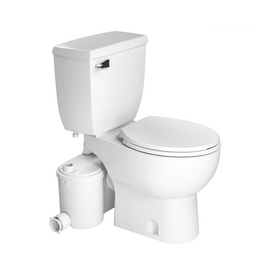
Living the Tiny House, Zero Waste Life
Last Updated: Apr 13, 2025Michaela Holsinger, with her partner Ben Barker, lives an inspiring zero waste, tiny house lifestyle, which she documents with insight, charm, and hilarity on her Instagram feed @tinyzerowastelife. Chickens, herbs, a vegetable garden, and lots of ingenuity go into their tiny zero-waste approach to leaving a light footprint on the planet.
“We are two young people on a journey to zero waste! We live in our 18' tiny house on wheels on a mushroom farm just south of Olympia, WA (recently moved from Seattle) and are working on creating a little homestead,” Holsinger wrote on Instagram, by way of introduction to her followers. “Currently my full-time job is working overnights as a designated crisis responder and then I take occasional doula clients. I am passionate about making less waste…and care strongly about being a model for small changes folks can make to be creating less waste.”
About her partner, she wrote: “Ben is an amateur herbalist [@tinyhomesteadherbal]. He's passionate about natural medicine, edible and medicinal mushrooms, fermentation, and organic gardening. He's a phenomenal cook and is passionate about making healthy food and herbs accessible to folks. We're passionate about the tiny house movement and trying to legalize tiny homes. Together we're doing what we can to decrease our environmental impact and are excited to share that journey with you!”
The Zero Waste Path
Holsinger set foot on her remarkable path early in life. Not only did her grandparents live on a hobby farm, “and I was really intrigued by that kind of life,” she says, but her family also loves to “joke that my Mom is frugal to a fault. I learned zero waste strategies from her before it was a thing,” from reusing mason jars and plastic bags to composting. A little more than two years ago, however, Holsinger got hooked on the zero-waste life.
She stared dating Barker, “who is pretty much a hippy,” she says with a laugh, “as he's really thoughtful about incorporating habits and purchasing choices into daily life that are zero waste.” Holsinger also heard that “every piece of plastic that’s ever been created still exists today. That blew my mind.” She next undertook a 30-day, a plastic-free challenge with some friends. “It was so eye-opening,” she says. “I was suddenly so aware. Once you do something like that you can’t really go back. Simple changes, like using a water bottle, buying in bulk, and reusing bags, really stuck.”
Hello, Occhi
At about the same time, Holsinger and Barker became interested in tiny living and were thinking about converting a bus into a skoolie. Then, Holsinger had coffee when an acquaintance. While talking about her interest in tiny living, he asked if she and Ben would like to buy his tiny house. The answer was yes.
Table of Contents
- Zero Waste: Challenges and Opportunities

The house was named Occhi, short for occhiolism, Holsinger says, which refers to “the awareness of the smallness of your perspective.” Within four months, they’d moved into Occhi, which is about 133 square feet. They “toned down the log cabin vibe a little bit,” says Barker, by bringing in some blue and yellow, and as much artwork as they could fit on the walls.

They use an electric heater in the winter, “the city electric is hydro-powered,” Holsinger says, with a backup propane heater. “We’re not off-grid,” she explains. “When we bought the house, we got a great deal on some solar panels and had big plans to put solar in. Then we realized we were using such little power it would have taken eight years—with the battery purchase and installation—to recoup the cost, so we sold them.”
They use about 200 gallons of water a month, which comes from a garden hose on the mushroom farm that they’ve hooked up. They have a Sun-Mar composting toilet; about every six months, they empty the tray at the bottom into a compost pile outside designated for fertilizing trees and shrubs. In the kitchen, they have a small refrigerator, two-burner stove, and the household sink. It’s a tight fit, admits Barker, who does most of the cooking, but they make it work.

The loft holds a king-size bed—necessary because Barker is tall; the opposite is a storage area where the couple keeps camping gear. Throughout the tiny house, they’ve innovated storage solutions—a shelf behind the door for shoes; drying racks for herbs in the ceiling; an un-paper-towel holder for cloth towels; pull out bins for clothing and herbs; a table that flips up and folds away; a double chair that opens into a twin bed for guests—that make tiny living do-able.

Off their front porch, which is surrounded by herbs growing in planters and hops growing up the side of the house for shade, are the chicken coop (they keep heritage breed chickens for eggs and meat) and a garden with raised beds where Barker grows vegetables. They also buy in bulk from their local co-op and farmers markets and make Kombucha.
Zero Waste: Challenges and Opportunities
“When working toward a zero-waste life in a space like this, little things catch you by surprise,” Barker says. “Still, we’re as conscious as we can be. And it’s cool to see how much impact we have.” They broke up with Amazon, and prioritize purchases from ethical companies committed the environment and that sell high-quality goods. They also shop thrift stores and Goodwill Outlet. They repair clothes whenever able; Holsinger also turns old cotton shirts into the kitchen and cleaning rags, which can be composted when they’re no longer usable.
Still, Holsinger admits, “Trying to live zero waste is an unattainable goal” in a capitalist culture. In part because, hey, every once in awhile, a girl needs to get to Dairy Queen. “I went to DQ the other day for a Blizzard because DQ keeps me awake when I’m driving home after my night shift,” she says with a sigh. “I got it without the plastic spoon. Still, the cup is plastic. The Oreos came in plastic. I still think about these decisions. But I don’t want to live a tiny zero waste life and not enjoy certain things.”
Living tiny has other challenges, Holsinger says. Barker cooks a lot and the fridge is really small. Making the loft bed is impossible. And the couple wants to expand their family in the near future, which means they are considering a new, slightly larger home. Still, they’re completely happy in their tiny house, from which they inspire others with their zero-waste lifestyle.
“Prior to moving into our tiny house, I had some fearful nights,” Holsinger recalls. “I was afraid I’d hate tiny house living. But that hasn’t been the case at all. It’s super nice. We do well together. We spend lots of time together in our double chair. We close the loop on so many processes, from growing our own food to composting. At this point in our lives, we can’t imagine living any other way!”
Camille LeFevre
Camille LeFevre is an architecture and design writer based in the Twin Cities.










